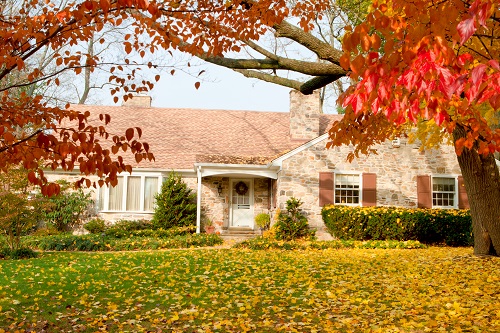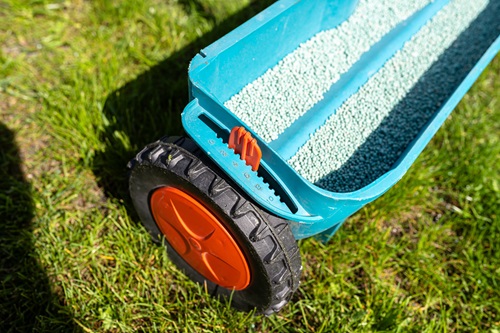
This is a crucial time to get your yard ready for the next growing season. As the temperatures begin to drop, the pace of plant growth slows down, and the damp soil becomes ideal for promoting strong root development. To ensure your plants stay healthy and thriving, it’s essential to address various lawn care tasks during the fall season.
Fall lawn care checklist
Loosen Compacted Soil
If you notice water pooling on your lawn, it’s a clear sign that your soil is compacted. To enable water and essential nutrients to reach the roots effectively, it’s essential to aerate the soil. For smaller yards, a garden fork can serve this purpose, but for larger lawns, consider using a walk-behind aerator. This tool extracts soil plugs about 2½ to 3 inches deep, which will naturally break down by spring.
Feed Your Greenery
Reducing the use of fertilizers in late summer is a wise move, as it prevents plants from putting energy into new leaf growth. However, grass continues to develop its roots until the ground temperature drops to around 40 degrees Fahrenheit. Therefore, the fall season is an ideal time to nourish your lawn. Apply a high-phosphorus (12-25-12) fertilizer mix during fall to promote root growth, leading to a lush, green lawn in the coming spring.
Give Your Lawn a Final Trim
For the last mowing session of the season, we recommend cutting your grass to a height of 1¼ inches. Shorter grass is less susceptible to diseases, and fallen leaves won’t cling to it as much. Be cautious not to trim it too short, as most of the grass’s food production occurs in the upper blades.
Simplifying the task of handling fallen leaves involves using a rake to gather them onto a plastic tarp. We typically place these leaves, along with those cleared from the gutters, into a compost bin.
A simple enclosure made of chicken wire can serve as an effective compost bin. To promote decomposition, remember to turn the leaf pile with a garden fork weekly. The result, often referred to as “black gold,” can be used to enrich your lawn, flower beds, and shrub areas the following year.
Plant New Shrubs
In many regions, planting shrubs in early fall offers them an advantageous head start in developing strong roots within the cool, moist soil of the season. To plant a shrub successfully, follow these lawn care steps: dig a hole that’s twice the diameter and 2 inches less in depth than the root ball’s height, position the shrub in the hole so that the top of the root ball is at ground level (or slightly above), fill in with soil, water, add more soil to the top of the root ball (without compacting it), and finally, apply mulch.
Trim Dead Branches
Lifeless branches can pose risks during winter, so it’s important to address them. For small ornamental trees, you can mitigate further damage by trimming cracked, loose, or diseased branches near the trunk. It’s crucial to leave these trimmed areas exposed to facilitate the healing process.
Prune Perennials
Maintaining your lawn during the fall season will lead to healthier spring beds. Start by removing spent annuals, as well as pests like snails and slugs that often thrive in the fall. Additionally, trim back the spent foliage of perennials to ground level, as this redirects energy to the roots, ensuring a robust growth in the next season. Every three years, consider dividing crowded tuberous plants such as irises and daylilies to provide more space for an abundance of flowers.
Mulch for New Plantings
Once a light frost has occurred but before the ground freezes, it’s advisable to apply a layer of mulch to new beds. You can use materials like chopped leaves, weed-free straw, or wood chips. Ensure that any decomposed layers of organic mulch are thoroughly mixed into the soil. Afterward, apply a fresh layer, approximately 2 to 4 inches thick (avoid excessive mulch, which can smother the roots). This serves to keep newly planted vegetation warm while controlling water runoff and soil erosion.
Prepare Drip Systems for Winter
Standing water within drip-irrigation systems can freeze, potentially causing damage to the tubing. To prevent this, it’s wise to winterize your system. For simple setups, shut off the water, remove the tap-joint adapter, and use an air compressor with a high-volume, low-pressure setting to blow out any remaining water from the system’s connection to the tap. This precautionary step eliminates the need to uproot the entire system come spring.
Call Conner’s Lawn Care Service now if you need help in maintaining your lawn.
Conner’s Lawn Care Service
Myrtle Beach, SC
843-504-4901
http://connerslawncare.com/


No comments:
Post a Comment